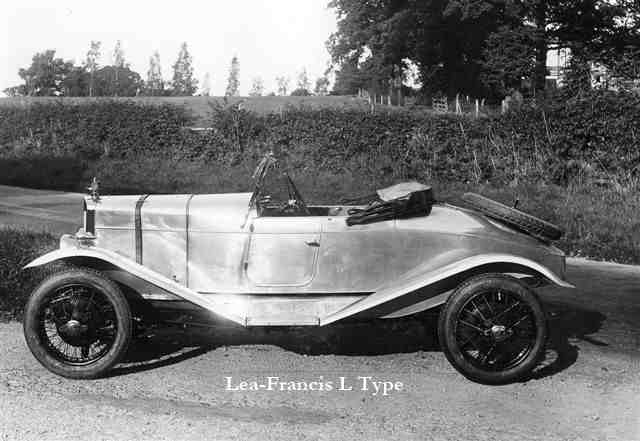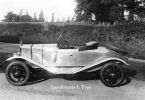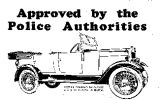
The first real sports car produced by Lea-Francis, the L-Type was was built on a modified variant of the chassis used on the the J-Type and most were fitted with a Brooklands spec. Meadows 4ED engine.
| Engine: |
Meadows 4ED (12/50 Brooklands) 11.9hp, 52bhp
|
| Wheelbase: | 8' 9" |
| Track | 3' 9" |
Designed in late 1925, the 1926 Lea-Francis range saw a number of modifications being made to the chassis design. The newly designated J, K, L, M and N types kept the quarter elliptic rear springs, hand-brake operating on the transmission and cone clutch of the earlier models, but with improvements such as stiffer rear cross-members and improved rear spring mounting. All models, except the G Type, now came with four-wheel brakes as standard.
When fitted with the then-new, higher revving Meadows 4ED engine, motor cars on this chassis were designated L or M Type. The 4ED engine featured a separate aluminium crankcase and a pressure-fed crankshaft mounted on three white-metalled main bearings. This with alloy connecting rods, larger ports in the cylinder head and a reasonable camshaft profile gave a more powerful and easier revving engine than the 4EB and 4EC types. In fact, while arguably a little too powerful for some of the components on the earlier Lea-Francis cars to which it was fitted, the Meadows 4ED became the engine of choice for the majority of the company’s cars from this point on.
The L Type was Lea-Francis’ first real sports car built in significant numbers. The frame, while in dimension the same as that fitted to the J-Type etc., was lightened and designed to take lighter style bodies than the J, M and N-Types etc. Referred to as the 12/50 Brooklands Sports Model, the Meadows 4ED in the L Type had a high compression cylinder head, two carburettors (usually Solex) and a “Brooklands” camshaft, and the cars were guaranteed to do 70mph. A Dewandre brake servo assisted the bringing of this sporting motor car to a stop and Hartford shock absorbers on all four corners aided road holding.
Most L types were fitted with four- or two-seater sports bodies and had wire wheels.
174 L types were built of which two have survived in the Club, although much altered; the high mortality rate is probably due to the back axle being unable to cope with the power of the 4ED.



